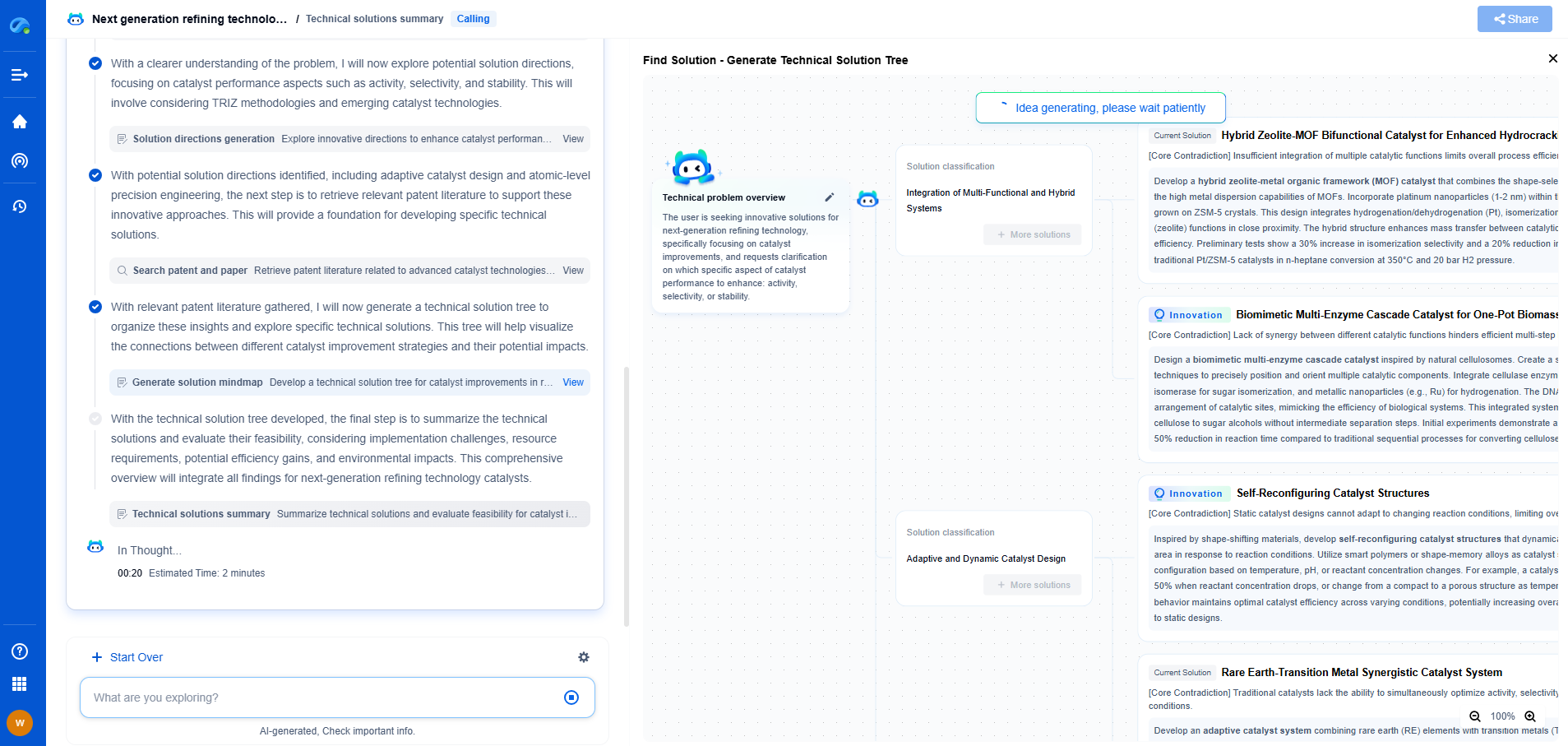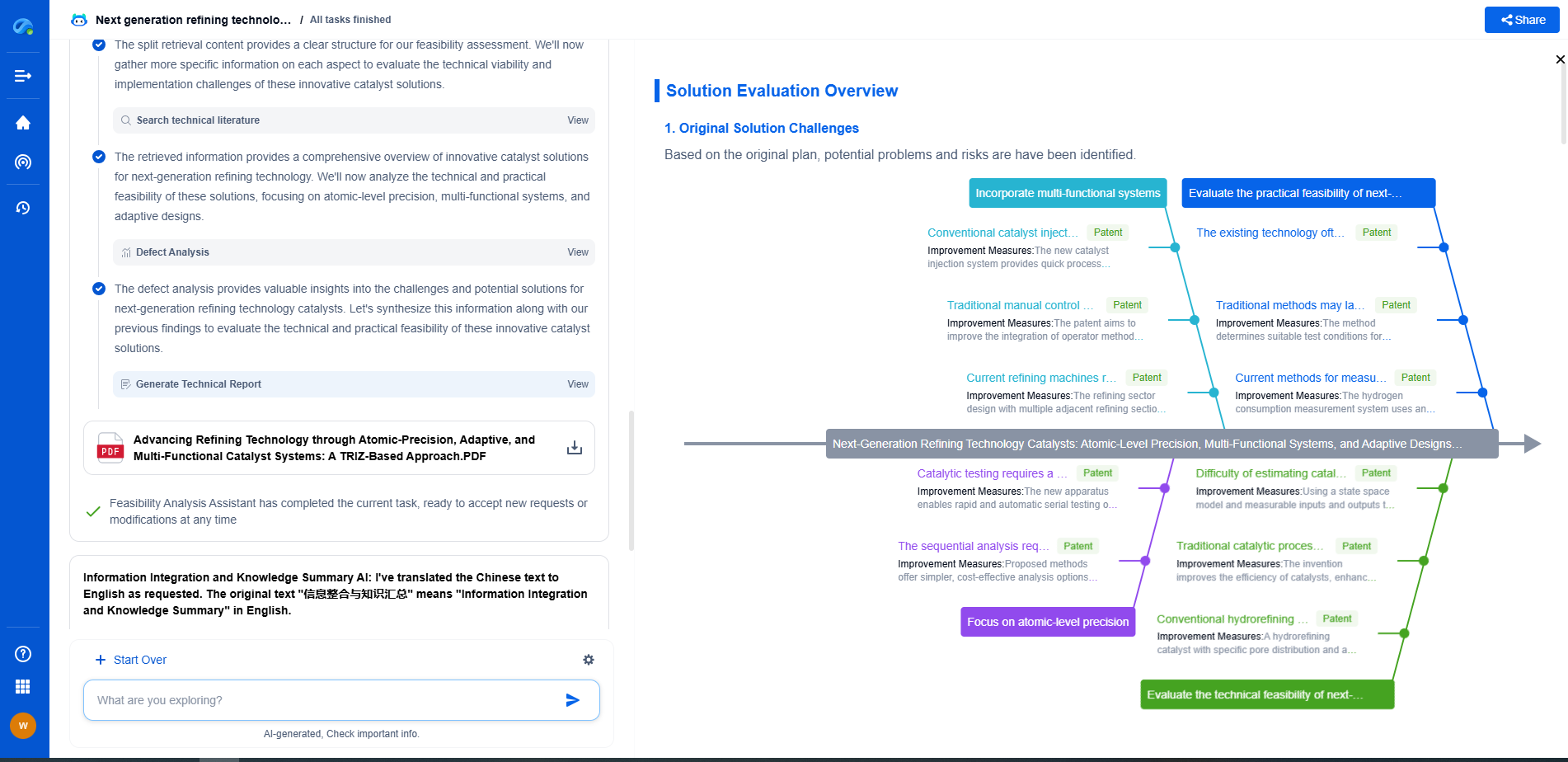Robot control loop: Components and function
JUN 26, 2025 |
Understanding the Basics of a Control Loop
A control loop is a feedback mechanism that allows a robot to perform tasks consistently and adaptively. It involves several steps: sensing, processing, and acting. The loop is continuous, enabling the robot to adjust its actions based on real-time data from its environment. This dynamic process ensures that the robot can respond to changes and achieve its objectives accurately.
Key Components of a Robot Control Loop
1. Sensors
Sensors are the eyes and ears of a robot, providing it with vital information about its surroundings. They can measure various environmental parameters like temperature, distance, light, and sound. Common types of sensors used in robots include ultrasonic sensors for distance measurement, infrared sensors for detecting obstacles, and cameras for visual input. The accuracy and reliability of sensors are crucial for the robot to make informed decisions.
2. Controllers
The controller is the brain of the robot, processing information received from the sensors. It uses algorithms to interpret sensor data and decide the robot’s next actions. Controllers can range from simple microcontrollers for basic tasks to complex systems like onboard computers for advanced robotics. The controller’s effectiveness depends on its ability to process data quickly and make correct decisions in real-time.
3. Actuators
Actuators are the muscles of the robot, executing commands from the controller. They transform electronic signals into physical movement, allowing the robot to perform tasks such as moving, gripping, or manipulating objects. Common types of actuators include motors, servos, and hydraulic systems. The choice of actuators depends on the robot’s intended function and the precision required for its operations.
Function of the Control Loop
1. Sensing
The sensing phase involves collecting data from the robot’s environment. Sensors gather information and send it to the controller. This step is critical, as the quality of data affects the entire control loop. Advanced robots often utilize sensor fusion, combining data from multiple sources to enhance accuracy and reliability.
2. Processing
In the processing phase, the controller analyzes the sensor data to determine the robot’s state and environmental conditions. It then uses this information to decide the appropriate actions. This step may involve complex computations, especially in robots with autonomous capabilities.
3. Acting
The acting phase involves executing the decisions made by the controller. The controller sends signals to the actuators, which perform the necessary actions. This phase is where the robot interacts with its environment, completing tasks or responding to changes.
Feedback and Adaptation
A crucial feature of a robot control loop is feedback, which allows the system to adapt and improve over time. Feedback involves monitoring the outcomes of actions and comparing them to desired results. If discrepancies arise, the control loop adjusts its parameters to enhance performance. This adaptability is vital for robots operating in dynamic or unpredictable environments.
Applications of Robot Control Loops
Robot control loops are applied in various fields, from industrial automation to autonomous vehicles. In manufacturing, control loops enable robots to assemble products with high precision and speed. In autonomous vehicles, control loops help navigate complex environments, ensuring safety and efficiency. Understanding control loops’ versatility and potential is essential for leveraging robotics in different sectors.
Challenges and Future Trends
Despite the advancements, robot control loops face challenges such as sensor inaccuracies, processing delays, and actuator limitations. Researchers are continually working to improve these components, striving for more robust and reliable systems. Future trends in robot control loops point towards increased autonomy, machine learning integration, and enhanced human-robot collaboration.
In conclusion, a robot control loop is a sophisticated system that enables robots to function effectively in real-world environments. By understanding the components and functions of control loops, we can appreciate the complexity and potential of modern robotics. As technology advances, the development of more intelligent and adaptive control loops will undoubtedly drive the future of robotics, opening new possibilities for innovation and application.
Ready to Redefine Your Robotics R&D Workflow?
Whether you're designing next-generation robotic arms, optimizing manipulator kinematics, or mining patent data for innovation insights, Patsnap Eureka, our cutting-edge AI assistant, is built for R&D and IP professionals in high-tech industries, is built to accelerate every step of your journey.
No more getting buried in thousands of documents or wasting time on repetitive technical analysis. Our AI Agent helps R&D and IP teams in high-tech enterprises save hundreds of hours, reduce risk of oversight, and move from concept to prototype faster than ever before.
👉 Experience how AI can revolutionize your robotics innovation cycle. Explore Patsnap Eureka today and see the difference.
- R&D
- Intellectual Property
- Life Sciences
- Materials
- Tech Scout
- Unparalleled Data Quality
- Higher Quality Content
- 60% Fewer Hallucinations
Browse by: Latest US Patents, China's latest patents, Technical Efficacy Thesaurus, Application Domain, Technology Topic, Popular Technical Reports.
© 2025 PatSnap. All rights reserved.Legal|Privacy policy|Modern Slavery Act Transparency Statement|Sitemap|About US| Contact US: help@patsnap.com

